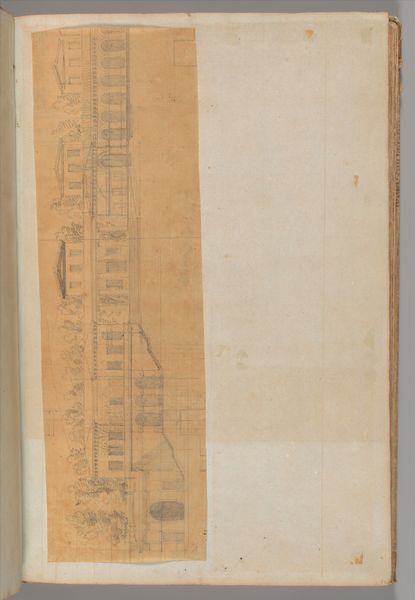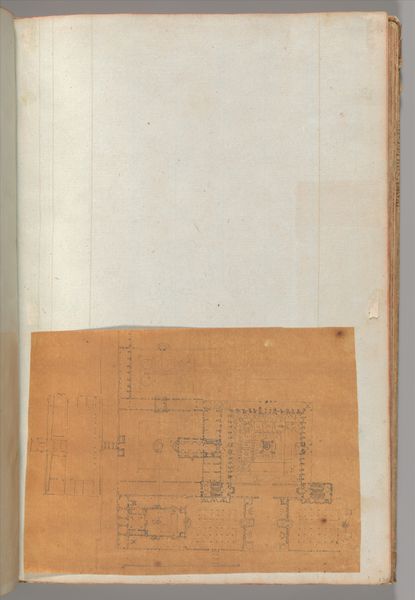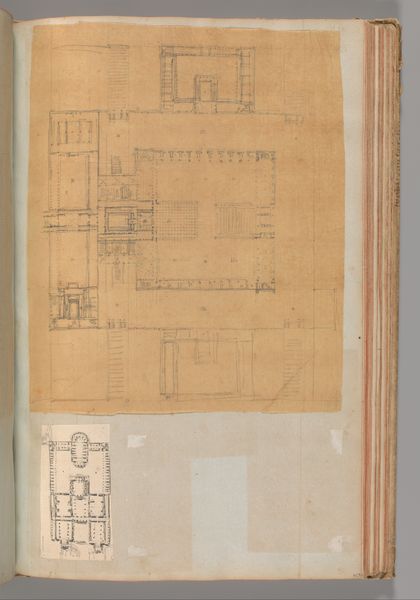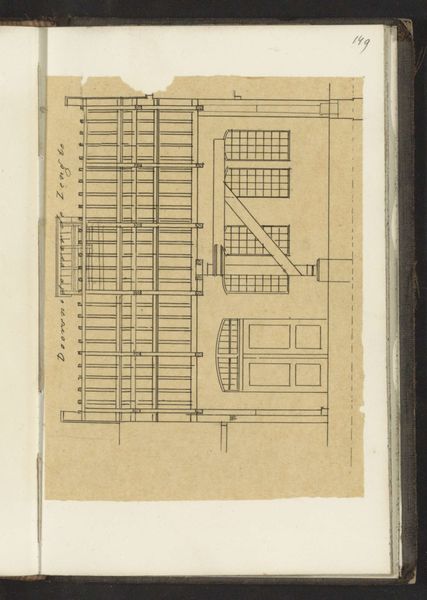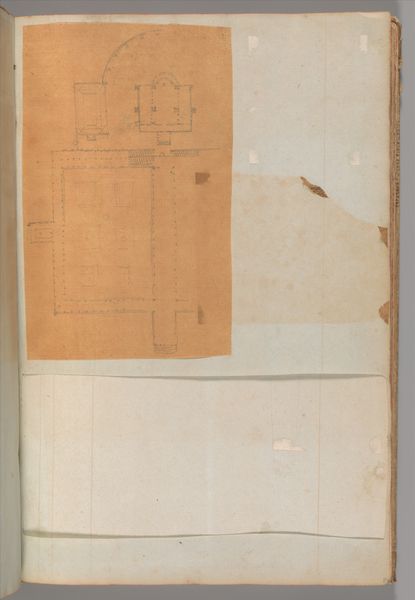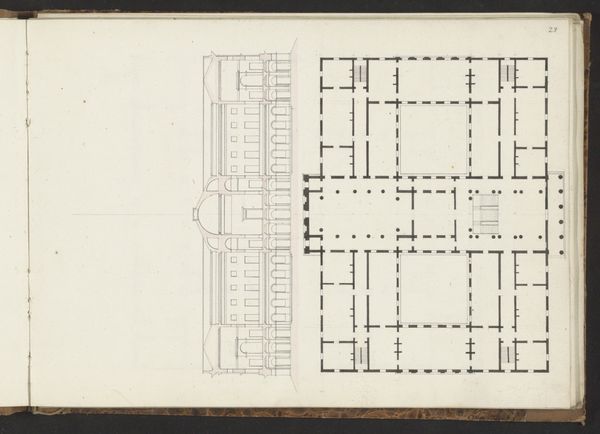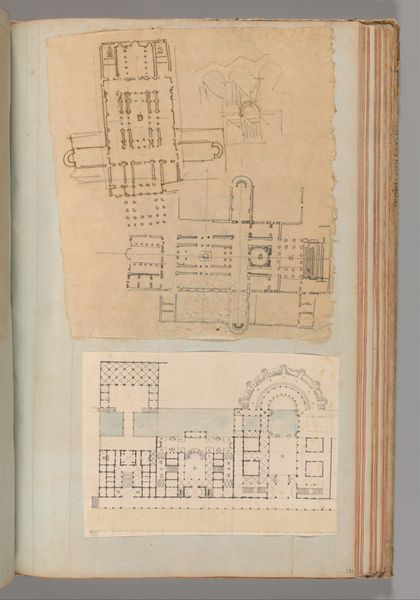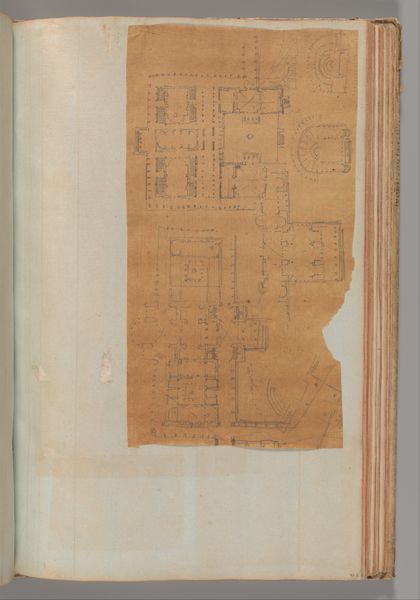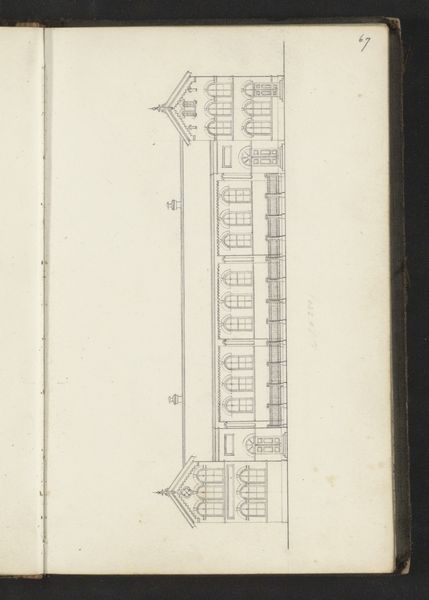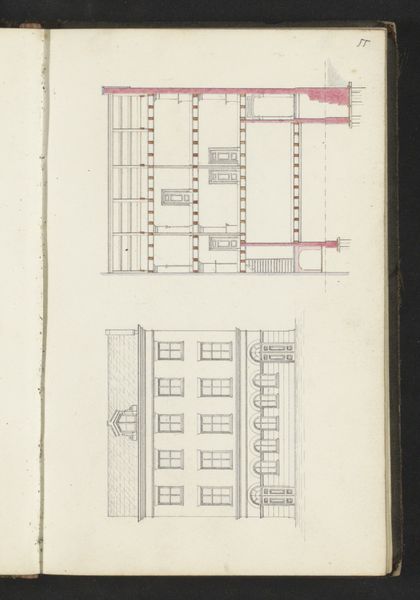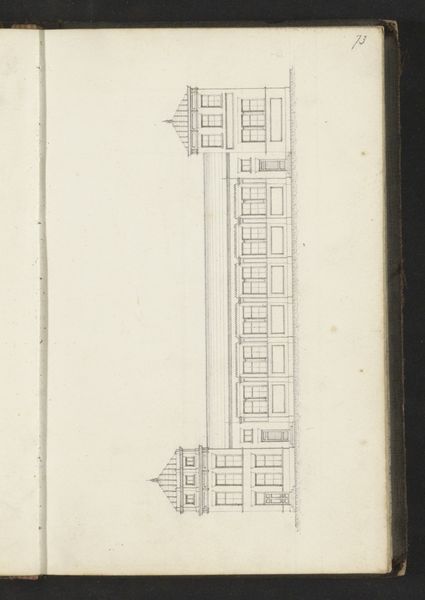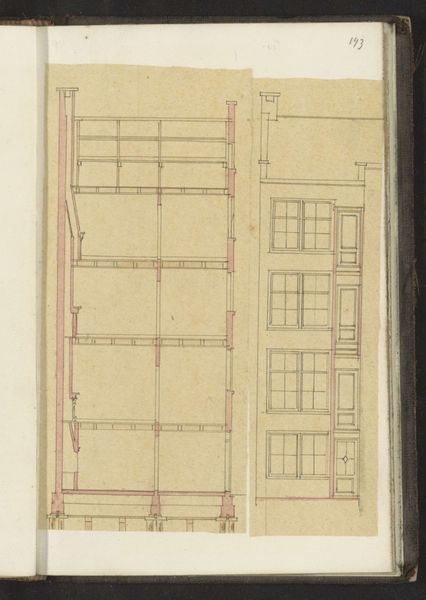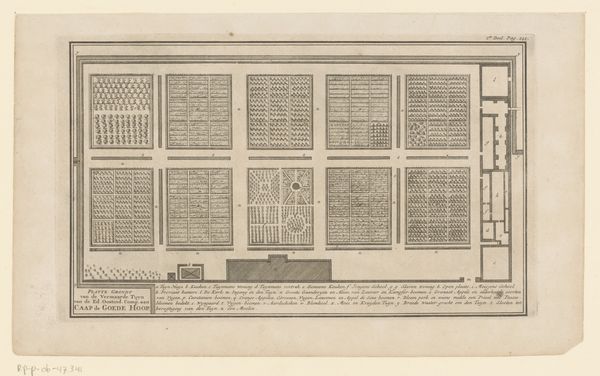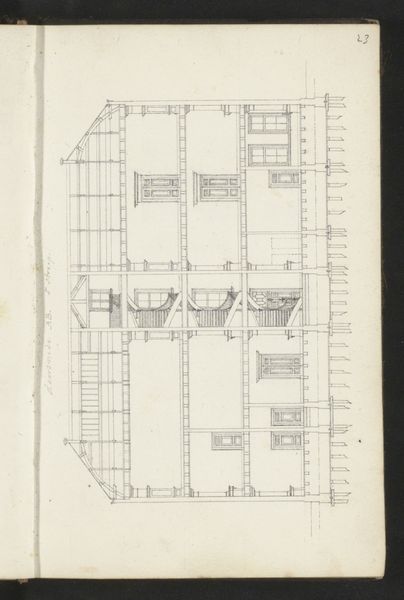
Page from a Scrapbook containing Drawings and Several Prints of Architecture, Interiors, Furniture and Other Objects 1795 - 1805
0:00
0:00
drawing, print, etching, paper, engraving, architecture
#
drawing
#
neoclacissism
# print
#
etching
#
paper
#
engraving
#
architecture
Dimensions: 15 11/16 x 10 in. (39.8 x 25.4 cm)
Copyright: Public Domain
Curator: My first impression is of intricacy, but also of fragility. It's delicate work, but it seems to suggest a sort of... longing. Editor: Indeed! What we're looking at is a page from a scrapbook attributed to Charles Percier, dating from around 1795 to 1805. It includes drawings and several prints, focusing on architecture, interiors, furniture, and other objects. A fascinating snapshot of Neoclassical design. Curator: The architectural elements, especially. The way they’re rendered makes them feel almost…utopian. Like these spaces aren’t meant for the grit of real life. Editor: Perhaps not! The Neoclassical movement was very interested in notions of order and civic virtue, drawing inspiration from the architecture of ancient Greece and Rome. Think about the context. France during and after the revolution. Architects like Percier were essentially designing new symbols for a new society. A society that hoped to embody those ancient ideals, equality among the classes… Curator: It's interesting you say "hoped" because I see a stark disconnect there. These grandiose designs, were they ever really intended for everyone? There’s an undeniable elitism baked into these clean lines. Almost as if the common rabble would sully the intended order. Editor: That's a critical point. Who has access? Who benefits from the envisioned "order"? If the architectural designs themselves implicitly advocate social control or the prioritization of one class over another… It brings the entire framework into question. Curator: Absolutely! And if we shift to a more theoretical perspective on the spaces. You can see this interest manifest throughout Foucault, and other important theorists who saw modern architecture's tendency toward power hierarchies as an active method of societal suppression. This seems far from utopian... Editor: Precisely. Even these idealized representations tell a more complex, less celebratory story. The act of archiving them within a scrapbook also layers additional narrative about taste, access, and artistic aspiration in this tumultuous time. The scrapbook format is informal. The precision and symmetry captured feel incredibly charged. Curator: A little bit sad then, isn't it? In a way? Editor: I agree. There's definitely a sense of the melancholic—beauty juxtaposed against revolutionary turbulence.
Comments
No comments
Be the first to comment and join the conversation on the ultimate creative platform.
